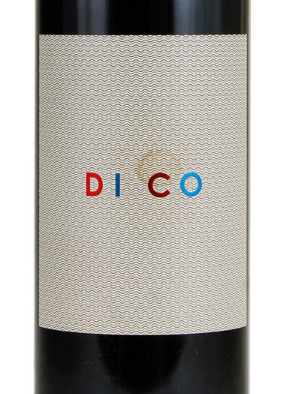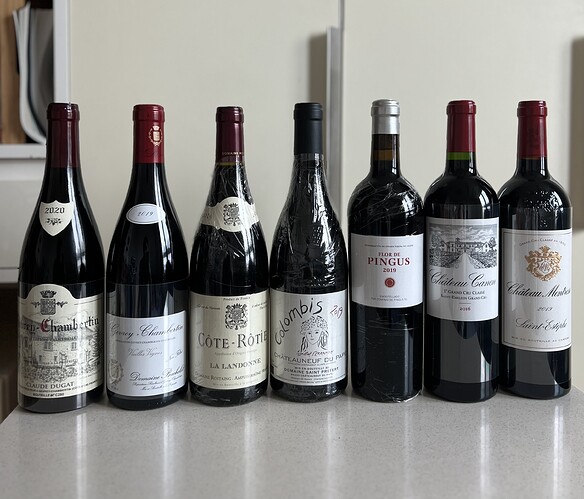I ddnt mean collectors like that who don’t drink at all. I’m thinking of those folks that have wine cellars and have special display shelves and lighting to show off their ‘82 Petrus, their DRC, etc… Yes, they may drink some wines but they search for high end trophy wines to collect. Or they have collection goals like every 2016 classified growth from Pauillac. They are the ones buying those perfect labels on Winebid not restaurants. Restaurants generally don’t buy single bottles on winebid. When you see two bottles on winebid at the same price but one has a Scuffed label, I would always purchase the perfect label, if different prices I’d get the cheaper one
That makes complete sense for older, very valuable, bottles. I’m referring to bottles within the last 10 years that aren’t even going for triple digits. Should have made that distinction in my initial posting.
As for the old vintage, I agree.
However, when I store the wines of the recent vintage I bought, I want the wine label to be clean if possible.
So when I buy wine recently, I put all the wine label films on it to manage it.
Bumping this thread as I (accidentally/got mixed up with another lot I was tracking) purchased a bottle from Winebid that was noted to have a “light label condition issue”. Cost was $46+prem, so at worst a ~$50 mistake for a relative Winebid newbie. So, not necessarily here for the “Always be careful with your bids!” snark - just more of a general question/to manage my expectations prior to opening.
Could that small drop in the middle of the label have contaminated the rest of the label (much darker than other DiCo listings)? The bottle was “removed from a professional wine storage facility” - but could it have had extended light exposure before that contributing to the discoloring? Obviously not an old bottle ('19). Would Winebid only tag it as “light label condition” if they were not concerned about the impact on the contents in the bottle?
Again, not a huge deal in the scheme of things if I screwed up this purchase, just trying to calibrate expectations and more of a general question on these type of issues going forward.

For some it matters for impression on the dining table.
For some it matters for resale value (where a perfectly preserved label somehow is perceived as care for what’s inside)
For some it’s about collecting, and collectors like pristine
The only concern should be if stains reflect leakage from the bottle in question, or guilt by association, of any leakage onto it from a different bottle suggesting poor storage conditions.
Hence some wrap their bottles in glad warp / cling film etc. to preserve the labels
Conversely a wine trading friend of mine used to joke about getting some spray on ‘mould’ to imply storage had been in a cold & humid cellar. Such damage also being seen as a positive of storage conditions (perhaps more so in the past than our modern day image-conscious selves)
Wine labels only last for a few years in my passive root/wine cellar so I wrap all my bottles in shrink wrap to keep the labels mold free.
I wouldn’t worry about that at all.
It looks like a drop of rust water condensation or something dropped there and then probably just slowly transferred through the paper tinting it.
Could be anything I guess but I wouldn’t think it speaks to what’s in the bottle in the least.
I am new to Winebid. The “light label condition” I’ve mostly encountered seemed to be minimal wine staining on the label. May mean nothing, as far as the condition of the wine inside the bottle, e.g., last year I had a case of wine delivered where one (or two - I can’t recall) bottle(s) had broken during shipment, so a number of other bottles had labels with wine stain from the broken bottle(s). I couldn’t have cared less when it came to the stains on those other unbroken bottles and have since thoroughly enjoyed the wine from a number of them. On the other hand, stain on a label could be an indication of some bottle having leaked wine during storage - an event suggesting possibly less than ideal storage of the wine being auctioned. Perhaps not. But, obviously, something happened to cause that label to be stained with wine.
In today’s age of information overload coupled our need to be seen as discerning, informed buyers it’s no surprise that some fraction of buyers won’t consider auction bottles that aren’t perfect. This reduces the interest in those bottles by some fraction and drives more interest towards those bottles without any label conditions.
All else being equal, I’ll bid on the pristine label first; but usually have no issue with “light label condition issues.” I’m ecstatic when I can pick up a scuffed, torn label for $20 less than the perfect label everyone else is bidding on.
I’d have little to no problem with @Mike_M3 's DiCo label. It nearly proves the bottle has been stored lying down and doesn’t point towards conditions I worry about.
The label issues I avoid are ones that show dripping wine streaks (seepage) from that bottle or surrounding bottles like @Terry_H_a_r_r_i_s mentions above. While that may merely indicate a faulty cork in a surrounding bottle, it might also signal poor storage conditions for all the bottles in that cellar which gives me pause.
